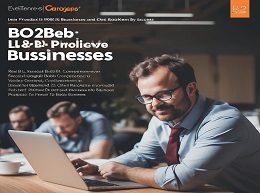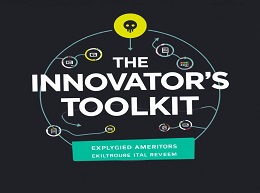Lean B2B: Build Products Businesses Want

"Lean B2B: Build Products Businesses Want" - A Comprehensive Review
"Lean B2B: Build Products Businesses Want" by Étienne Garbugli is an essential guide for entrepreneurs and product managers looking to create successful B2B (business-to-business) products. This book integrates lean startup principles with specific insights and strategies for the B2B context. It provides a step-by-step approach to understanding customer needs, validating ideas, and building products that solve real business problems. This review delves into the book's core concepts, practical advice, and illustrative examples, offering a thorough understanding of how to apply these principles to achieve B2B success.
Understanding the Lean B2B Approach
The lean methodology, popularized by Eric Ries' "The Lean Startup," emphasizes creating minimal viable products (MVPs) and iterating based on customer feedback. Garbugli adapts this approach for the B2B market, where customer needs and validation processes differ significantly from B2C (business-to-consumer) markets.
Key Principles of Lean B2B
1. Customer-Centric Development : Building products based on deep understanding of customer needs.
2. Iterative Process : Continuously refining the product based on feedback and testing.
3. Validation : Ensuring ideas are viable through rigorous testing before scaling.
Identifying and Understanding the Right Customers
A crucial aspect of Lean B2B is identifying and deeply understanding the right customers. Garbugli emphasizes the importance of targeting decision-makers and users within businesses who have the authority and need for your product.
Customer Development Process
The book outlines a structured customer development process involving interviews, surveys, and direct engagement with potential customers to uncover pain points and needs.
Example: A startup developing a project management tool for construction companies conducted in-depth interviews with project managers and site supervisors. They discovered that while there were many project management tools available, none addressed the specific needs of on-site coordination and communication in the construction industry. This insight guided the startup to focus on features like real-time updates and mobile accessibility, tailored to construction site environments.
Building a Minimum Viable Product (MVP)
Once you understand the customer’s needs, the next step is to build an MVP that addresses these needs with the simplest, most cost-effective solution.
Defining the MVP
The MVP should include only the core features necessary to solve the customer's primary problem and validate the product idea.
Example: An entrepreneur aiming to create a B2B SaaS (Software as a Service) platform for HR management initially focused on building an MVP that automated the employee onboarding process. By including features such as document management, digital signatures, and task assignment in the MVP, the startup was able to quickly validate the product's value proposition before expanding to other HR functions like performance management and payroll.
Validating the Product Idea
Validation is a critical step in the Lean B2B process. It involves testing the MVP with real customers to gather feedback and measure interest.
Techniques for Validation
Garbugli discusses several techniques for validating product ideas, including pilot programs, beta testing, and pre-selling.
Example: A company developing a new analytics tool for e-commerce businesses ran a pilot program with five online retailers. They offered the tool for free in exchange for detailed feedback and usage data. This pilot program helped the company identify usability issues, essential features, and potential improvements, allowing them to refine the product before a broader launch.
Navigating the B2B Sales Process
The B2B sales process is typically longer and more complex than B2C, involving multiple stakeholders and decision-makers.
Understanding the Sales Cycle
Garbugli provides insights into the B2B sales cycle, highlighting the importance of building relationships and demonstrating value.
Example: A cybersecurity startup targeting financial institutions understood that gaining trust was crucial. They invested in creating detailed case studies, obtaining industry certifications, and conducting thorough demonstrations to showcase their product’s effectiveness. By addressing concerns related to security and compliance early in the sales process, they were able to shorten the sales cycle and close deals more efficiently.
Overcoming Common Challenges in Lean B2B
Building a successful B2B product comes with unique challenges, from understanding complex customer needs to navigating lengthy sales processes.
Dealing with Complex Customer Needs
Businesses often have complex and specific needs that require tailored solutions. The book advises continuous engagement with customers to refine and adapt the product.
Example: A startup offering a logistics optimization platform found that different industries had unique requirements. By maintaining close relationships with customers in various sectors, they were able to develop customizable features that catered to the specific needs of each industry, enhancing the platform's versatility and appeal.
Managing Long Sales Cycles
The extended sales cycles in B2B can be daunting. Garbugli suggests strategies for maintaining momentum, such as regular follow-ups, providing value through educational content, and leveraging existing customer testimonials.
Example: To keep potential clients engaged during long sales cycles, a software company created a series of whitepapers and webinars on industry best practices. These resources not only kept the company top-of-mind but also positioned them as thought leaders, making the eventual purchase decision easier for the clients.
Success Stories and Case Studies
Garbugli enriches the book with real-world examples and case studies that illustrate the successful application of Lean B2B principles.
Case Study: Dropbox for Business
Dropbox started as a consumer product but successfully transitioned to the B2B market by identifying and addressing the specific needs of businesses. They introduced features like advanced security, administrative controls, and team collaboration tools. By conducting extensive user research and continuously iterating based on feedback, Dropbox was able to expand its market and achieve significant growth in the B2B sector.
Case Study: Slack
Slack is another prime example of a B2B product that achieved rapid success by focusing on user needs. Initially targeting small teams and startups, Slack focused on creating a seamless communication experience. They used extensive customer feedback to iterate and improve the product, adding integrations and features that catered to larger organizations. This customer-centric approach helped Slack become a dominant player in the business communication market.
Practical Tools and Frameworks
"Lean B2B" provides a variety of tools and frameworks to help entrepreneurs implement the lean approach effectively.
Lean Canvas for B2B
The Lean Canvas is a one-page business plan template that helps entrepreneurs map out their business model. Garbugli adapts this tool for the B2B context, emphasizing key elements such as value propositions, customer segments, and channels.
Example: A company developing a new marketing automation tool used the Lean Canvas to identify and validate its customer segments, value propositions, and key metrics. This structured approach helped them focus on the most critical aspects of their business model and iterate based on real customer feedback.
Customer Interview Templates
The book includes templates for conducting effective customer interviews, ensuring that entrepreneurs gather meaningful insights and avoid common pitfalls.
Example: Using the provided templates, a startup developing a financial management tool conducted interviews with CFOs and finance managers. These structured interviews helped them uncover pain points related to budgeting and forecasting, guiding the development of features that directly addressed these challenges.
The Impact of Lean B2B
"Lean B2B: Build Products Businesses Want" offers a comprehensive and practical guide for entrepreneurs looking to succeed in the B2B market. By combining lean startup principles with specific strategies for understanding and addressing business needs, Garbugli provides a roadmap for building products that deliver real value.
The book’s focus on customer-centric development, iterative processes, and rigorous validation ensures that entrepreneurs can minimize risk and maximize their chances of success. Whether you are launching a new B2B product or seeking to improve an existing one, "Lean B2B" offers invaluable insights and actionable advice to help you achieve your goals.
By applying the principles outlined in "Lean B2B," entrepreneurs can navigate the complexities of the B2B market, create products that meet genuine business needs, and build scalable, high-growth companies.













